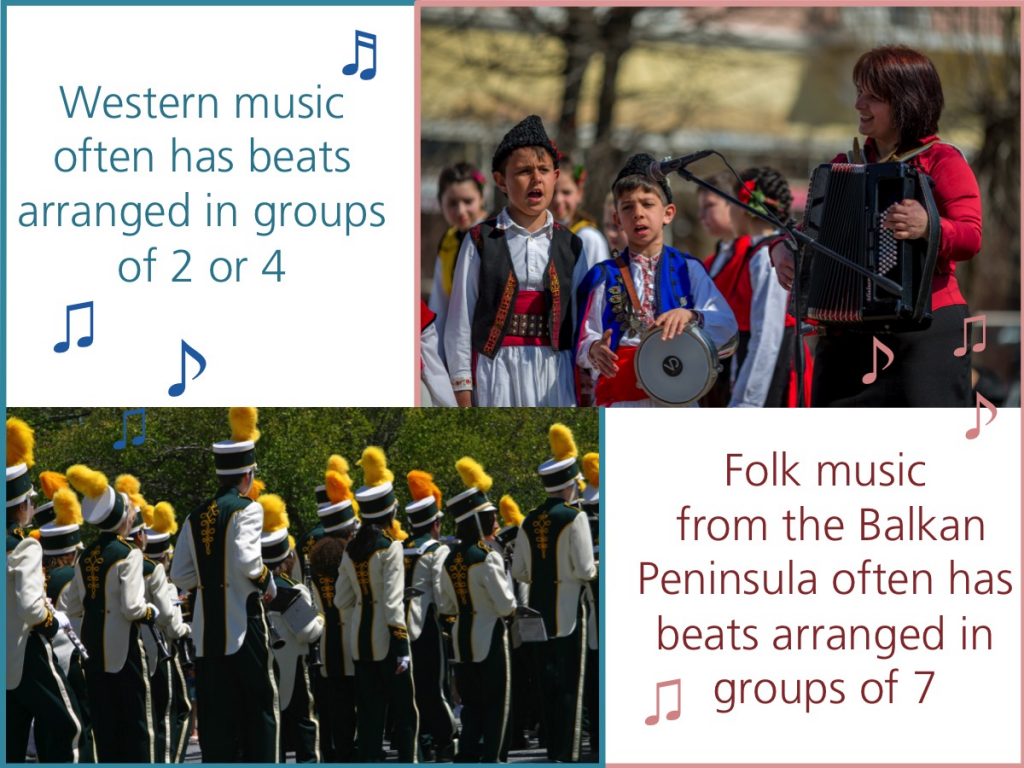
Music Attributions: Balkan clip and Western clip
When infants are listening to music, they learn more than just the sounds of different musical instruments. They are also learning about meter. Remember that meter tells us how groups of beats are arranged. Music from different cultures often uses different meters. For example, in typical Western music, beats are usually organized into groups of two or four. Think 1,2,3,4, 1,2,3,4. But in folk music from the Balkan Peninsula in Southeastern Europe, beats are often organized into groups of seven. Let’s listen to some examples.
The first song is in a meter common to western music called quadruple meter. This means beats are grouped in groups of four. As you listen, see if you can count the beats in groups of four.
Did this song sound familiar to you? Were you able to count the beats in groups of four?
This next song is in a meter that is uncommon in western music. Can you tell where the beats fall?
Were you able to tell where the beats fell in this song? The pattern of beats in this song is quite different. This song has beats divided into seven, a pattern called septuple meter.
-
- Beat
- the regular pulse of music
- Electroencephalography (EEG)
- a non-invasive method used to measure electrical activity in the brain
- Executive function
- a set of mental abilities that help us focus attention, remember information, and switch between tasks
- Magnetoencephalography (MEG)
- a non-invasive brain imaging technique used to determine which regions of the brain are active
- Meter
- a grouping of beats with specific patterns
- Neuroplasticity
- the ability to change how neurons in our brain are connected to each other
- Pitch
- the measure of how high or low we perceive sounds to be
- Pro-social behavior
- actions that are intended to help others
- Synchronized movement
- movements that occur in sync with musical beats and, or with other people
- Timbre
- the quality of a musical sound or voice that allows us to tell the differences between instruments or voices